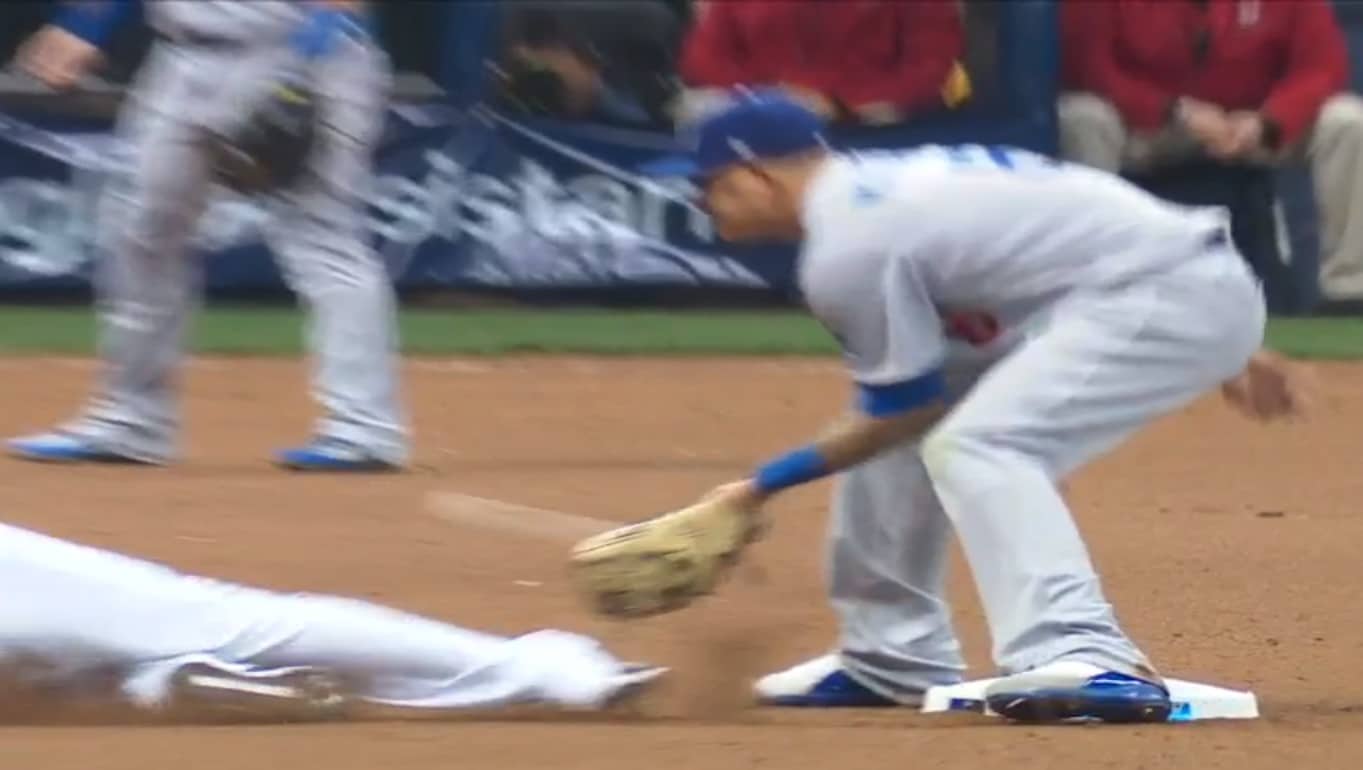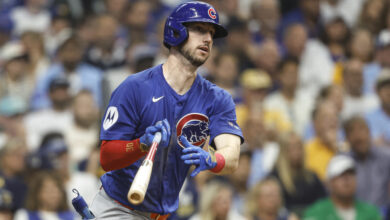
Manny Machado’s Shortstop Play Proves Costly in Game 1 against Brewers
CI’s Evan Altman wrote nicely yesterday about how some have noticed an improvement in Manny Machado’s shortstop play from his first half with the Orioles to his second half with the Dodgers. Both his piece and Ken Rosenthal’s in The Athletic (subscription) that it built from are worth reading.
There is no denying Machado’s defense has improved from what was basically the worst in the majors in the first half among starting shortstops. But for the Cubs, the question is whether it has improved enough to lavish boffo free agency dollars if he’s dead set on playing only shortstop with his next team.
I can give you my answer right now. I’d love Machado’s bat in the Cubs lineup, but not if it requires him to play shortstop full-time. If you can put him at third and Kris Bryant in left field, I’m all in and the Cubs have the starts of a nice upgrade to the offense without tempting any defensive fates.
I don’t share this preference flippantly. After watching a good bit of footage of Machado and his shortstop fundamentals, I remain convinced he is just an athletic third baseman playing out of position. This doesn’t mean he’s a hack out there, but he still will cost a playoff team enough extra pitches, outs, and runs to offset some of that plus-plus bat and make a title that much harder to achieve.
And watching the shortstop play is so essential. Only then can you see whether the foundation in fundamentals is truly there. Do this and you see how he sometimes winds up longer on double-play throws. You see how, when moves to his left to field a grounder mid-body, he still sometimes one-hands the ball (like a third baseman), thus increasing ball-transfer time. And you saw it in his tagging style Friday night that ultimately cost the Dodgers a key run in the NLCS Game 1 against the Brewers.
Let’s not forget, Machado did also hit a homer in that game ad drove in three. And to be sure, Machado was not the only Dodger making defensive mistakes in Game 1. Top sour laurels there go first and foremost to Yasmani Grandal behind the plate. But in the 4th inning, Grandal did make a perfect throw on an attempted steal by Domingo Santana. Replays not only reversed the initial out call, but also showed a couple fundamental tagging flaws by Machado.
Here’s a freeze frame from the Fox Sports 1 broadcast:
 Grandal’s throw clearly beat the runner and Machado is straddling the bag, holding his glove to let the runner tag himself out like any third baseman in the pre-replay era would do. Only problems are Machado no longer plays third and instant replay makes that tagging style quite risky.
Grandal’s throw clearly beat the runner and Machado is straddling the bag, holding his glove to let the runner tag himself out like any third baseman in the pre-replay era would do. Only problems are Machado no longer plays third and instant replay makes that tagging style quite risky.
Santana proves this by sliding off-center of the bag. Machado’s glove thus misses the lead foot and tags Santana at the knees. One batter later, Ryan Braun hit a two-out single to right to drive in Santana for a 5-1 lead. This run would prove key in ultimately holding the Dodgers off late in a 6-5 Brewers’ win.
What Machado did wrong on this play may seem minute to the lay observer and wouldn’t have been an issue several years ago, but such small fundamental intricacies are often the difference between title-contending shortstop play and losing one-run playoff games.
First, I would not advise Machado straddle the bag like a third baseman. Of course, you always want a thrown ball to cover as much of the distance to the bag as possible before catching it, but you can still catch the ball at the bag without straddling. The first problem with straddling is that it increases the chances of the thrown ball hitting the runner, caroming into the outfield and allowing him to advance to third.
Second, straddling encourages a more passive tag approach in which the glove is held out for the runner to slide into. Experienced middle infielders in the age of replay know this makes it too easy for savvy baserunners to elude the tag. And if the umpire misses the runner’s expert evasions, the eye in the sky usually won’t.
What middle infielders now must do is sweep the tag just enough so the glove swipes more of the area in front of the bag to catch the hand or foot before it reaches the base. It’s worth noting that Machado’s more passive tagging style is exactly the approach Javier Baez regularly kills with his swim move and other tricks.
Now, El Mago aficionados will correctly note Baez – who is in a class by himself when it comes to applying tags – does sometimes straddle the bag on stolen base attempts, then pops down or sweeps his tags. But as Machado demonstrated Friday, that stance can add risk on bang-bang plays when executed by less adroit defenders.
Machado did not receive an error on the play, nor should he have. The ball did beat the runner, but this is an upper-tier shortstop technique. It is a play the Dodgers’ injured regular shortstop Corey Seager probably does make, but you don’t give a fielder an error just for not performing an elite move.
But elite is typically what it takes up the middle to win a World Series. And between Grandal and Machado in Game 1, the Dodgers gave away too many outs, extra bases, and runs. This in turn certainly shortened Clayton Kershaw’s start, forcing five innings from the Dodgers bullpen, which could haunt them in Game 2 Saturday.
Then again, Craig Counsell also pulled his starter after two innings and threw six relievers, including Josh Hader for three innings. I’m pulling for the Brewers, but the longer this series goes, the less effective an over-taxed bullpen will be. Unless of course the Dodgers defense helps out too much like it did Friday night.

